ENG | VNthougth processing center & random thinking archives
Don't wanna be here? Send us removal request.
Text
Numbers Are Also Iconic: The Circulation of 127 among K-Pop Enthusiasts
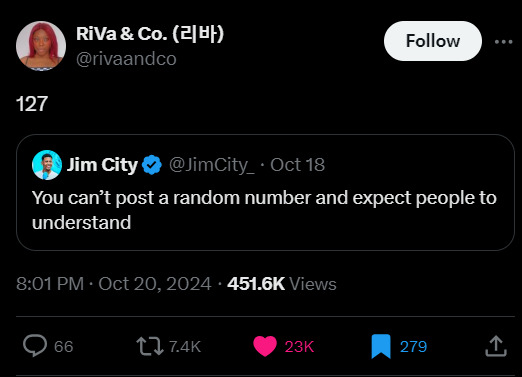
In his theory of semiology, Ferdinand de Saussure argued that while there is a connection between the two components of a sign - the signifier, the physical form that a sign takes and the signified, the concept that the sign refers to, this relationship is arbitrary as “the process which selects one particular sound-sequence to correspond to one particular idea is arbitrary” (Chandler, 2002). While we all are familiar with Arabic Numbers - the dominant numbering system in the modern world today, it is easy to see how certain numbers are given special meanings when used in particular cultures and societies.
Now imagine you are just a regular internet user, who has never even listened to a single K-Pop song in your life. You have your own curated online space on X (formerly Twitter), with no Hallyu-related content in sight, neither from yourself, your connections, or other accounts you follow. But one day, as you wake up and check your Twitter notifications as usual, you suddenly see a wave of users, seemingly K-Pop fans, screaming relentlessly in the quotes - all because you mentioned a very specific number in your original post - 127.

The number 127 has long been a visible sign among fans in the K-Pop sphere. This number comes from NCT 127, a subunit of the 25-member boy group NCT (abbreviation of Neo Culture Technology), one of the most influential groups in the 3rd generation of K-Pop. When SM Entertainment, NCT’s managing company, introduced their subunit system, they decided that NCT 127 would be a group based in South Korea - hence the country’s longitude (approximately 127°) was engrained into their name.
As NCT 127’s popularity grows and their fandom widens, K-Pop fans all over the world become more familiar with the presence of this number in the Hallyu context, and even find ways to notice this number everywhere around them. Within the fandom - NCTzens, or sub-fandom 127zens (fans who exclusively enjoy NCT 127 instead of the whole NCT brand), 127 is also considered an “angel number” - even for the group members themselves.

When fans mention the number 127, they’re not only talking about the group but also the essence of their musical identity. In terms of branding, NCT 127 has always been marketed as the “most sonically experimental” subgroup of NCT (Rolling Stones, 2023), with title tracks deemed as controversial “noise music” among K-Pop enthusiasts such as Kick It, Punch, 2 Baddies… yet, this is concrete evidence of the group’s unique artistic flare. Despite the hate received from other K-Pop fandoms, NCTzens are still proudly blasting NCT 127’s songs under the comments and quotes, dropping a 127 reference online wherever they can - even within contexts that originally had nothing to do with them.
It is worth noting that aside from mentioning the number, there are other signs that this fandom uses to indicate the perceived meaning of 127 - the color Pearl Neo Champagne, a shade of bright green officially announced as the group’s representative color, lyrics from their songs, pictures and/or memes of the members, clips cut from official music videos with the sounds from their iconic hits, and so on. Anywhere the number 127 is mentioned, these are the accompanying signs used by the fandom to represent and promote their favorite group - to the point that other internet users began to use the term “NCT (127) is always at the crime scene” to describe the unintentional appearance of the band within random situations.



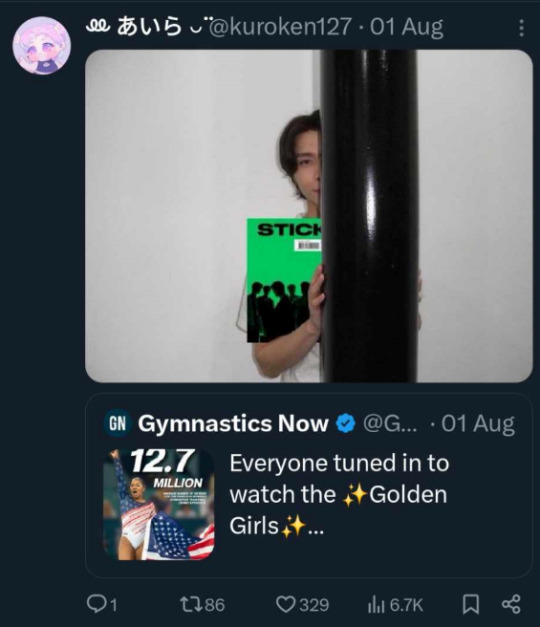
In general, the use of the number 127 and other signs pointing to both NCT as a whole and sub-unit NCT 127 can also be seen as a pattern for the K-Pop enthusiasts to recognize each other in the public sphere, as this is a joke existing exclusively to the NCTzen fandom and may be adopted by whoever came to be familiar with the group’s identity in the Hallyu scene. As long as this boy band is still active and relevant within the K-Pop discourse, there will soon be other signs generated by the audience coming across the internet, contributing to the collection of signs pointing towards NCT 127.
—————
References:
[1] Chandler, D. (2022). Semiotics: The Basics (4th ed.). Routledge. https://doi.org/10.4324/9781003155744
[2] Rolling Stones (2023). How NCT 127 Became K-Pop’s Unapologetic Mavericks. https://www.rollingstone.com/music/music-features/nct-127-new-album-fact-check-interview-1234840592/
0 notes
Text
Fandom culture, boycotts, and funeral wreaths: A case study of RIIZE and BRIIZE using reception theory
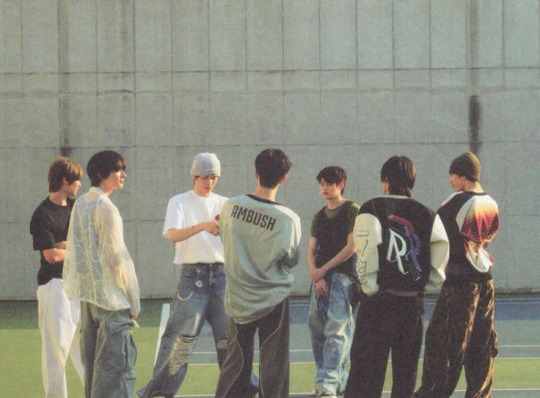
The K-Pop community with fans from all over the world has been in a state of unrest since October 11th, when SM Entertainment, one of the largest K-Pop companies, announced the return of RIIZE member (now ex-member) Seunghan from his 11-month hiatus. For some enthusiastic fans who had been patiently waiting for him, this felt like music to their ears. In contrast, others who had already invested their time, efforts, and money in the remaining 6 active members of RIIZE found this information a nuisance and could probably damage their favorite band’s reputation even more - given Seunghan’s controversies that led to his former hiatus.


The official announcement from RIIZE, and the provided English translation.
According to KProfiles, RIIZE (라이즈) originally debuted as a 7-member boy group under SM Entertainment on September 4, 2023. With multiple hits like Get A Guitar, Love 119, and Boom Boom Bass (along with the fact that they are considered a Big4 group - managed by the 4 biggest entertainment companies in South Korea), they quickly became one of the most famous K-Pop boy group in the 5th generation. Their fandom, known as BRIIZE (브리즈) has constantly shown the boys love and support, not just individually consuming their music but with collective activities such as hosting streaming parties, voting for music show wins, organizing birthday fan events, and even donating money for other supporting activities. However, this fandom, though already existing as a niche part within K-Pop fandoms, is largely divided into 2 subfandoms: OT6 BRIIZE, those who only show support for 6 RIIZE members excluding Seunghan, and OT7 BRIIZE, those who long for Seunghan’s comeback. This post will look into the reception theory introduced by Stuart Hall, and how it applies to the reactions to the original press release.
Hall’s Reception Theory was first introduced in 1973, in his essay titled “Encoding and Decoding in the Television Discourse”. He presented the encoding-decoding model, in which the producers of a media will put together a story based on events and materials of the outside world (known as the encoding process), and then the audience of said media can interpret the story based on their own experiences and knowledge (or the decoding process). However, regardless of the original message found in the media, the audience may follow the story differently and reject the message encoded by the producers. Hall argued that there are three possible reading positions: dominant-hegemonic, negotiated, and oppositional.
In the dominant-hegemonic position, the audience will accept the “preferred reading” and go along with the original message, as it also reflects their view of the story. In the case of RIIZE and their press release, this group would consist of OT7 BRIIZE who could be seen celebrating the official announcement and welcomed Seunghan back into the group with open arms.

"WELCOME BACK SEUNGHAN" was trending on X/Twitter 3 hours after RIIZE's announcement.
In the negotiated position, the audience can acknowledge the “preferred reading”, yet don’t necessarily agree fully with the message and even reject certain aspects of it to tailor the story to their own experiences. This group, in RIIZE’s case, includes the people who are hesitant about Seunghan’s return: they might be OT6s who are only familiar with the presence of the other 6 members, or casual listeners who have yet to understand why there is a change in the formation of the group.
Finally, the opposition position is seen in the audience that rejects the “preferred reading” totally. This behaviour is seen in OT6 BRIIZEs, and their reactions to the press release were rather negative, to say the least. From online posts showing dissatisfaction to offline protesting, which included sending protesting trucks and funeral wreaths to the SM Entertainment headquarters, they did everything they could to voice their objection to the announcement, and to demand that Seunghan leave the group for good.
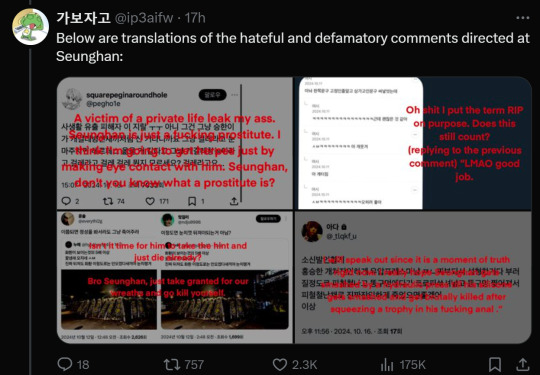
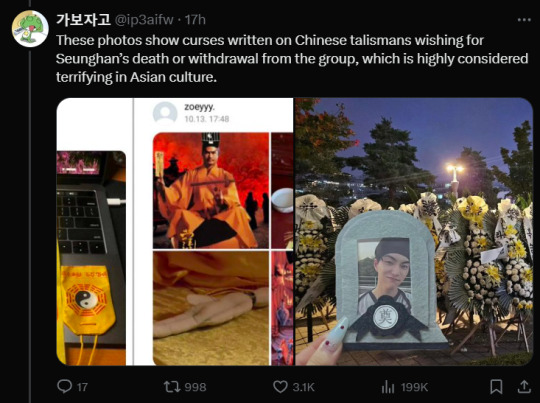
Negative reactions of OT6 BRIIZEs to the return of Seunghan.
In response to all of these reactions from the audience, SM Entertainment eventually released a second press release, saying that Seunghan is no longer a member of RIIZE, just two days after their original announcement. Ironically, the roles between the dominant-hegemonic group and the opposition group are now reversed - with OT6 BRIIZEs cheering on the removal of the “problematic” member, and OT7 BRIIZEs angrily showing unacceptance.


SM Entertainment's final press release about removing Seunghan from RIIZE.
Ultimately, what could this mean for the relationship between the encoders (entertaining companies) and the decoders (the fans and the public) in the K-Pop sphere? The change of decision of SM Entertainment showed that the audience, in fact, does have an influence on the framing of the story presented, and in this case, the producers are convinced by the needs of a group of audience that they find most relevant and will affect their business in the long term. This is especially harmful to K-Pop idols who are directly working in the industry because it shows that no matter how they go about doing their job, there will always be someone with the financial means out there who can put pressure on their managing companies, and eventually kick them out of business.
—————
References:
[1] KProfiles, https://kprofiles.com/riize-members-profile/
[2] Media Studies, https://media-studies.com/reception-theory/
0 notes
Text
Vietnamese folk literature as one of the earliest forms of pop culture media
Growing up, my childhood has always been filled with traditional myths, fairytales, and sayings about the lives of ancient Vietnamese people. Stories like The Legend of Mai An Tiêm, The Story of Thạch Sanh, The Hundred-knot Bamboo Tree, and many other pieces are passed down from generation to generation, thus becoming one crucial aspect of Vietnamese culture: folk literature. Vu et al. (2014) while discussing the relationship between folklore and folk literature in Vietnam stated that within the broader concepts of folklore, folk literature can be defined as one that correlates to the description of linguistic folklore, and includes any verbal artistic creation that is born and continuously reformed and revised collectively through multiple generations of the people. Vietnamese folk literature can be categorized into several genres: myths, legends, fairytales, proverbs, folk songs, jokes, and more.

The Legend of Lạc Long Quân and Âu Cơ, or Con Rồng Cháu Tiên [Children of the Dragon Father and the Fairy Mother] tells the story of how the people of Vietnam were born, and how the first King (Hung Vuong) were chosen. The tale existed since the ancient times of Vietnam and is passed on to younger generations to this day.
Folk literature has always been prevalent throughout the course of Vietnamese history. Since the ancient times of Vietnam, there were already various myths explaining the creation of the land, people and nation - Nguyen (2014) described this as the time when the people had to live dependent on nature, yet possessed this desire to conquer it. Then followed the birth of legends and folktales about the nation-building period (2879 - 179 B.C.), with the first genre being an “elevated in spirit” version of ancient myths overtime (Vu et al., 2014) and the second one retelling the events and victories within the period with a fraction of fiction and fantasy intertwined. Even during the Chinese rule of over 1000 years, folktales highlighting the bravery and will to win back the land such as The Trung Sisters and Lady Trieu continued to spread, becoming the earliest symbols of Vietnamese patriotism. At the same time, another flood of folktales inspired by the socioeconomic life - one that also bared the cultural influence of the dominating Chinese dynasties - with characters frequently seen in daily lives such as The Starfruit Tree or Sọ Dừa emerged.
During the feudalism period, these pieces of folklore continued to be passed down and slowly became the complete version as we know in modern society. One noteworthy detail about Vietnamese culture during this period is the existence of the Three Teachings - Buddhism, Confucianism and Taoism, which hold significant influence on the average Vietnamese civilian and continuously adapt values from one another. In a 2018 study about the essence of the Three Teachings in folktales, Vuong et al. found that Confucian values tend to be more involved with the final message of the story, sometimes along with Taoist values, and an overwhelming absence of Buddism manifestations. They argued that Confucian scholars likely archived the folktales, and they probably removed any Buddhist values that go against the Confucian values of the country's ruling class. Up until the 16th century, when these values became too restricting, the idea of liberating the people from the chains of Confucianism integrated into the folktales, along with the rise of Đạo Mẫu - the worship of the mother goddesses. The 18th century also witnessed the birth of Jokes (Truyện cười) mocking the outdated feudalist regime, and other forms of folk literature in the peasant life.
Nowadays, folk literature is still prominent in modern pop culture. Aside from being taught in the education system, these stories and messages are the inspiration for various forms of media. From music, novels to movie adaptations, there are many ways for us younger generations to continue polishing the existing and beloved stories, and let their traditional yet positive values live on. After all, with one definition of popular culture being "originating from the people", it's safe to say that our take on these traditional pieces will ensure the relevancy of folk culture on people's lives furthermore.
—————
References:
[1] Nguyen, D-C. (2014). Kho tàng truyện cổ tích Việt Nam [Collection of Vietnamese folktales]. Tre Publishing House.
[2] Vu, A-T., Pham, T-Y., Nguyen, V-H., Pham, D-X-H. (2014). Giáo trình văn học dân gian [Folk Literature]. Vietnam Education Publishing House.
[3] Vuong, Q-H., Bui, Q-K., La, V-P. et al. (2018). Cultural additivity: behavioural insights from the interaction of Confucianism, Buddhism and Taoism in folktales. Palgrave Commun 4, 143. https://doi.org/10.1057/s41599-018-0189-2
2 notes
·
View notes
Text
Gây quỹ - Một phần của văn hóa người hâm mộ
Với sự ra đời và phát triển của đa dạng các loại hình sản phẩm truyền thông, thật không khó để bắt gặp những fandom - cộng đồng người có chung niềm yêu thích đối với một bộ phim, truyện, một nghệ sĩ hay bất kì người nổi tiếng nào. Nhìn chung, mỗi fandom có thể được coi như một tiểu văn hóa (subculture), với những quy luật vận động, thành phần tham gia hay các hoạt động có liên quan mang đặc trưng của chủ thể được yêu thích và những biểu hiện chung của người hâm mộ. Không chỉ là một không gian an toàn để người hâm mộ bày tỏ chung niềm yêu thích của mình, các tiểu văn hóa này còn có khả năng tổ chức những hoạt động giúp đoàn kết cộng đồng của mình - tiêu biểu là các chiến dịch gây quỹ.

[Ảnh: Fandom Forward, một trong những tổ chức từ thiện phi lợi nhuận được thành lập trên cơ sở cộng đồng người hâm mộ, thành lập từ năm 2005 - fandomforward.org]
Các chiến dịch gây quỹ trong fandom thường diễn ra trên tinh thần tự nguyện, vì vậy nên không có một quy chuẩn chung nhất nào về mục đích hay quy mô của một chiến dịch. Cũng chính vì vậy, ngoài những chiến dịch gây quỹ vì mục đích từ thiện, các fandom, đặc biệt là trong ngành công nghiệp âm nhạc, thường tổ chức gây quỹ để ủng hộ thần tượng bằng nhiều hình thức như mua nhạc số hoặc album vật lý, tổ chức sự kiện, đặt biển quảng cáo, bỏ phiếu bầu…

[Ảnh: Album tổng hợp các chiến dịch gây quỹ thiện nguyện của fandom K-Pop tại Việt Nam - VKR News, Facebook]

[Ảnh: Các dự án quảng cáo của fandom nhóm nhạc WayV dành cho 6 thành viên nhân dịp nhóm tổ chức sự kiện ra mắt album mới - angelxiaodery, X]
Có thể thấy rằng, dù những dự án như trên thường ít khi được khởi động bởi một tổ chức chính thức với tư cách pháp nhân cụ thể, nhưng những con số khổng lồ mà một chiến dịch có thể mang lại đã chứng minh được sự thành công của loại hình gây quỹ này - đó cũng là lí do các chiến dịch gây quỹ càng ngày càng trở nên phổ biến hơn. Một số nguyên nhân chính có thể giải thích được sự phổ biến của gây quỹ trong fandom là như sau:
Xuất phát từ tiếng nói chung của cộng đồng: Bản chất của các fandom là không gian chung của những người hâm mộ, và các chiến dịch gây quỹ này như một công cụ để họ thể hiện tiếng nói chung đó. Khi một cộng đồng có nhận thức rõ ràng về các giá trị tất cả bọn họ đều hướng tới, họ sẽ có thêm động lực để tham gia gây quỹ và đạt được mục tiêu chung.
Đơn vị tổ chức gây quỹ là những người thuộc fandom, và chịu trách nhiệm đại diện cho tiếng nói của fandom đó. Các đơn vị này thường là một cộng đồng nhỏ hơn trong fandom, tập hợp với nhau để trở thành người điều hành các fanbase - kênh thông tin được tạo bởi fan dành cho tất cả mọi người trong cộng đồng. Do vậy, khi họ tiến hành chiến dịch của mình, thông tin của họ có thể dễ dàng tiếp cận đến đúng đối tượng mục tiêu - những người hâm mộ sẵn sàng đóng góp về mặt vật chất trên danh nghĩa của chủ thể mình thần tượng.
Bởi là chiến dịch xuất phát từ văn hóa người hâm mộ, đối tượng gây quỹ tiềm năng thường có sẵn với chân dung vô cùng rõ ràng. Vì vậy, đơn vị tổ chức sẽ có lợi thế hơn trong việc xây dựng các chiến thuật gây quỹ phù hợp để có thể đạt mục tiêu. Ngoài việc kêu gọi ủng hộ đơn thuần, các fanbase còn có thể tổ chức bán quà lưu niệm, tổ chức sự kiện hay tạo ra các trò chơi khác để tăng sự hấp dẫn của chiến dịch.

[Ảnh: Chiến dịch Dear Uri Julius với đa dạng các loại quà lưu niệm dành cho người tham gia gây quỹ - Our Woorichil - Vietnamese Fanpage, Facebook]

[Ảnh: Hình thức gây quỹ độc đáo thông qua game bỏ phiếu bình chọn - 127CENTRAL, X]
Với sự phát triển không ngừng về cả hình thức, quy mô và kết quả mang lại, có thể thấy rằng việc gây quỹ trong cộng đồng người hâm mộ sẽ mang lại cả những cơ hội và thách thức.
Về cơ hội, trước hết, với người hâm mộ tham gia vào quá trình gây quỹ, họ có thể nhận lại kinh nghiệm về việc lên kế hoạch và đề án gây quỹ, xây dựng chiến lược truyền thông, phân bổ nguồn tài chính và kết nối với nhiều cá nhân hay đơn vị khác. Dù có thể họ bắt đầu chiến dịch vì đam mê, những kỹ năng họ có thể thu thập được sẽ là nền tảng để họ tiếp tục phát triển và làm việc trên thực tế. Thứ hai, với chủ thể được yêu thích, các chiến dịch này sẽ là một đầu mối tiềm năng để họ tìm hiểu về thị trường, nhu cầu và hành vi của người tiêu dùng, từ đó có thể vận dụng vào công việc kinh doanh của chính mình. Thậm chí, các chủ thể còn có khả năng đề nghị hợp tác chính thức với đại diện fandom để cùng tổ chức các hoạt động, hình thành nên mối quan hệ đôi bên cùng có lợi cho cả họ và người hâm mộ.

[Ảnh: Sự kiện The Eras Party được tổ chức bởi Taylor Swift Fan Vietnam - cộng đồng người hâm mộ Taylor Swift với sự tài trợ của Universal Group Vietnam - đơn vị đại diện cho nữ nghệ sĩ tại Việt Nam - TSVN, Facebook]
Về thách thức, một trong những nguy cơ rõ ràng nhất từ những chiến dịch này là sự thiếu minh bạch, thâm chí là lừa đảo đến từ đơn vị tổ chức. Đặc biệt, với việc đa số hoạt động gây quỹ được diễn ra online, các cá nhân cần cẩn trọng khi tìm hiểu về việc nguồn tiền ủng hộ của mình sẽ thực sự đi về đâu - điều này cũng đòi hỏi các đơn vị tổ chức gây quỹ cần công khai khoản tiền đã gây quỹ được và phân bổ ngân sách chi tiết. Tiếp theo, dù về lý thuyết các hoạt động gây quỹ này được diễn ra một cách tự nguyện, những chiến dịch này có thể trở thành một gánh nặng vô hình đối với người hâm mộ, đặc biệt là những người có khả năng đóng góp bị giới hạn hơn. Việc các hoạt động gây quỹ diễn ra ồ ạt và ngày càng phổ biến có thể kích thích tính ganh đua giữa các fandom, và khiến chúng biến thành những hoạt động để phô diễn sức mạnh hơn là nhắm đến mục đích đóng góp ban đầu.
Như vậy, với thực tế rằng gây quỹ trong cộng đồng người hâm mộ đang ngày càng trở nên phổ biến hơn, có lẽ đã đến lúc để công chúng dừng nhìn nhận việc tham gia fandom như một hoạt động vô bổ chỉ phục vụ sở thích, và có nhận thức khách quan hơn về những ảnh hưởng thực tế của phong trào này. Từ đó, các cá nhân có thể nhìn nhận rõ hơn về vai trò của mình trong các cộng đồng mình tham gia, cũng như có nền tảng suy nghĩ đúng đắn mỗi khi tham gia vào những hoạt động gây quỹ tương đương.
-----
0 notes